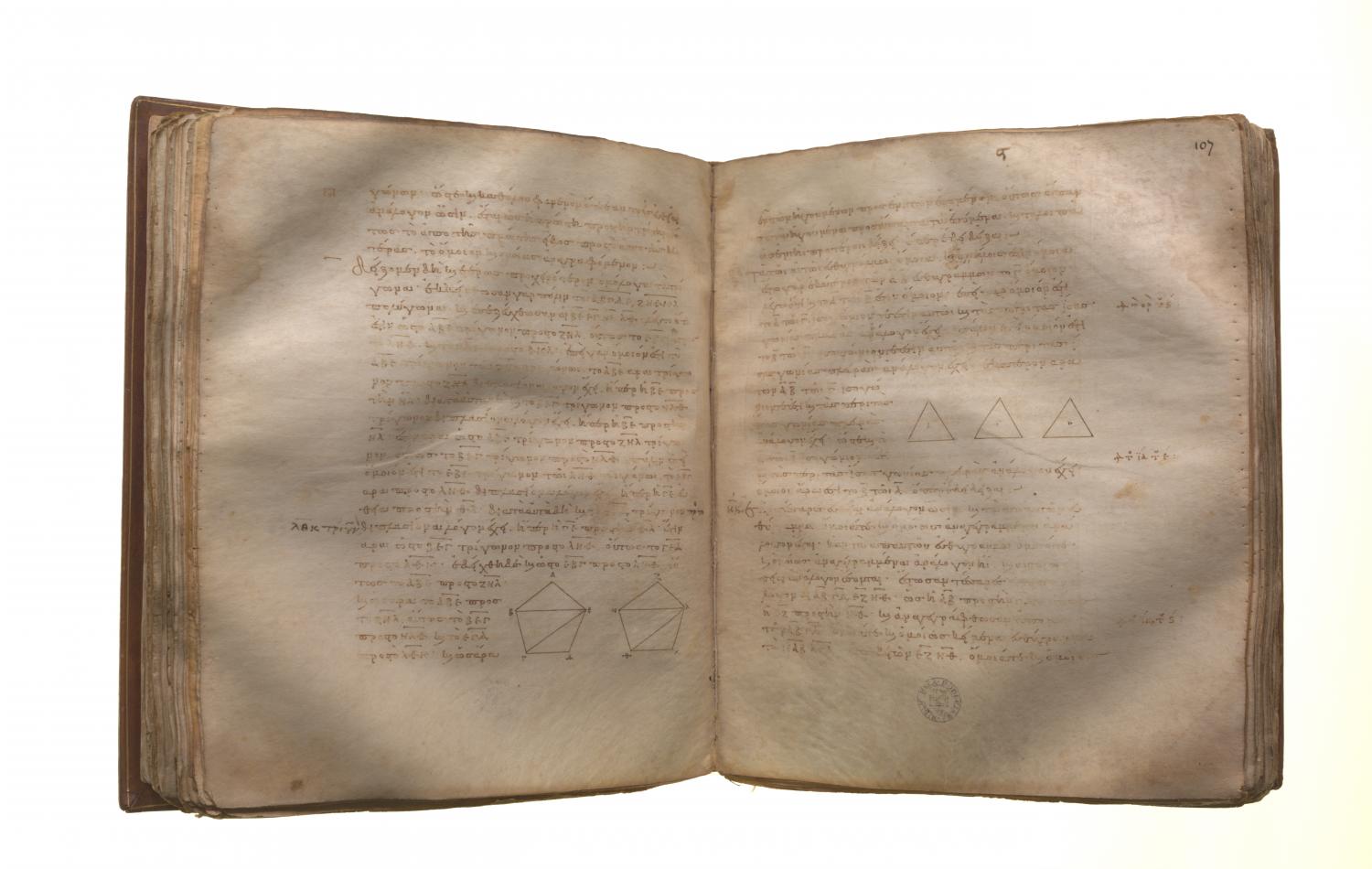Similar figures and proportions: Book 6 Proposition 20
Translations
Similar polygons are divided into similar triangles, and into triangles equal in multitude and in the same ratio as the wholes, and the polygon has to the polygon a ratio duplicate of that which the corresponding side has to the corresponding side. Let ABCDE, FGHKL be similar polygons, and let AB correspond to FG; I say that the polygons ABCDE, FGHKL are divided into similar triangles, and into triangles equal in multitude and in the same ratio as the wholes, and the polygon ABCDE has to the polygon FGHKL a ratio duplicate of that which AB has to FG. Let BE, EC, GL, LH be joined. Now, since the polygon ABCDE is similar to the polygon FGHKL, the angle BAE is equal to the angle GFL; and, as BA is to AE, so is GF to FL. [VI. Def. 1] Since then ABE, FGL are two triangles having one angle equal to one angle and the sides about the equal angles proportional, therefore the triangle ABE is equiangular with the triangle FGL; [VI. 6] so that it is also similar; [VI. 4 and Def. 1] therefore the angle ABE is equal to the angle FGL. But the whole angle ABC is also equal to the whole angle FGH because of the similarity of the polygons; therefore the remaining angle EBC is equal to the angle LGH. And, since, because of the similarity of the triangles ABE, FGL, as EB is to BA, so is LG to GF, and moreover also, because of the similarity of the polygons, as AB is to BC, so is FG to GH, therefore, ex aequali, as EB is to BC, so is LG to GH; [V. 22] that is, the sides about the equal angles EBC, LGH are proportional; therefore the triangle EBC is equiangular with the triangle LGH, [VI. 6] so that the triangle EBC is also similar to the triangle LGH. [VI. 4 and Def. 1] For the same reason the triangle ECD is also similar to the triangle LHK. Therefore the similar polygons ABCDE, FGHKL have been divided into similar triangles, and into triangles equal in multitude. I say that they are also in the same ratio as the wholes, that is, in such manner that the triangles are proportional, and ABE, EBC, ECD are antecedents, while FGL, LGH, LHK are their consequents, and that the polygon ABCDE has to the polygon FGHKL a ratio duplicate of that which the corresponding side has to the corresponding side, that is AB to FG. For let AC, FH be joined. Then since, because of the similarity of the polygons, the angle ABC is equal to the angle FGH, and, as AB is to BC, so is FG to GH, the triangle ABC is equiangular with the triangle FGH; [VI. 6] therefore the angle BAC is equal to the angle GFH, and the angle BCA to the angle GHF. And, since the angle BAM is equal to the angle GFN, and the angle ABM is also equal to the angle FGN, therefore the remaining angle AMB is also equal to the remaining angle FNG; [I. 32] therefore the triangle ABM is equiangular with the triangle FGN. Similarly we can prove that the triangle BMC is also equiangular with the triangle GNH. Therefore, proportionally, as AM is to MB, so is FN to NG, and, as BM is to MC, so is GN to NH; so that, in addition, ex aequali, as AM is to MC, so is FN to NH. But, as AM is to MC, so is the triangle ABM to MBC, and AME to EMC; for they are to one another as their bases. [VI. 1] Therefore also, as one of the antecedents is to one of the consequents, so are all the antecedents to all the consequents; [V. 12] therefore, as the triangle AMB is to BMC, so is ABE to CBE. But, as AMB is to BMC, so is AM to MC; therefore also, as AM is to MC, so is the triangle ABE to the triangle EBC. For the same reason also, as FN is to NH, so is the triangle FGL to the triangle GLH. And, as AM is to MC, so is FN to NH; therefore also, as the triangle ABE is to the triangle BEC, so is the triangle FGL to the triangle GLH; and, alternately, as the triangle ABE is to the triangle FGL, so is the triangle BEC to the triangle GLH. Similarly we can prove, if BD, GK be joined, that, as the triangle BEC is to the triangle LGH, so also is the triangle ECD to the triangle LHK. And since, as the triangle ABE is to the triangle FGL, so is EBC to LGH, and further ECD to LHK, therefore also, as one of the antecedents is to one of the consequents so are all the antecedents to all the consequents; [V. 12] therefore, as the triangle ABE is to the triangle FGL, so is the polygon ABCDE to the polygon FGHKL. But the triangle ABE has to the triangle FGL a ratio duplicate of that which the corresponding side AB has to the corresponding side FG; for similar triangles are in the duplicate ratio of the corresponding sides. [VI. 19] Therefore the polygon ABCDE also has to the polygon FGHKL a ratio duplicate of that which the corresponding side AB has to the corresponding side FG. Therefore etc.Porism. Similarly also it can be proved in the case of quadrilaterals that they are in the duplicate ratio of the corresponding sides. And it was also proved in the case of traingles; therefore also, generally, similar rectilineal figures are to one another in the duplicate ratio of the corresponding sides[Porism 2. And, if we take O a third proportional to AB, FG, then BA has to O a ratio duplicate of that which AB has to FG. But the polygon has also to the polygon, or the quadrilateral to the quadrilateral, a ratio duplicate of that which the corresponding side has to the corresponding side, that is AB to FG; and this was proved in the case of triangles also; so that it is also manifest generally that, if three straight lines be proportional, as the first is to the third, so will the figure described on the first be to the similar and similarly described figure on the second.]


